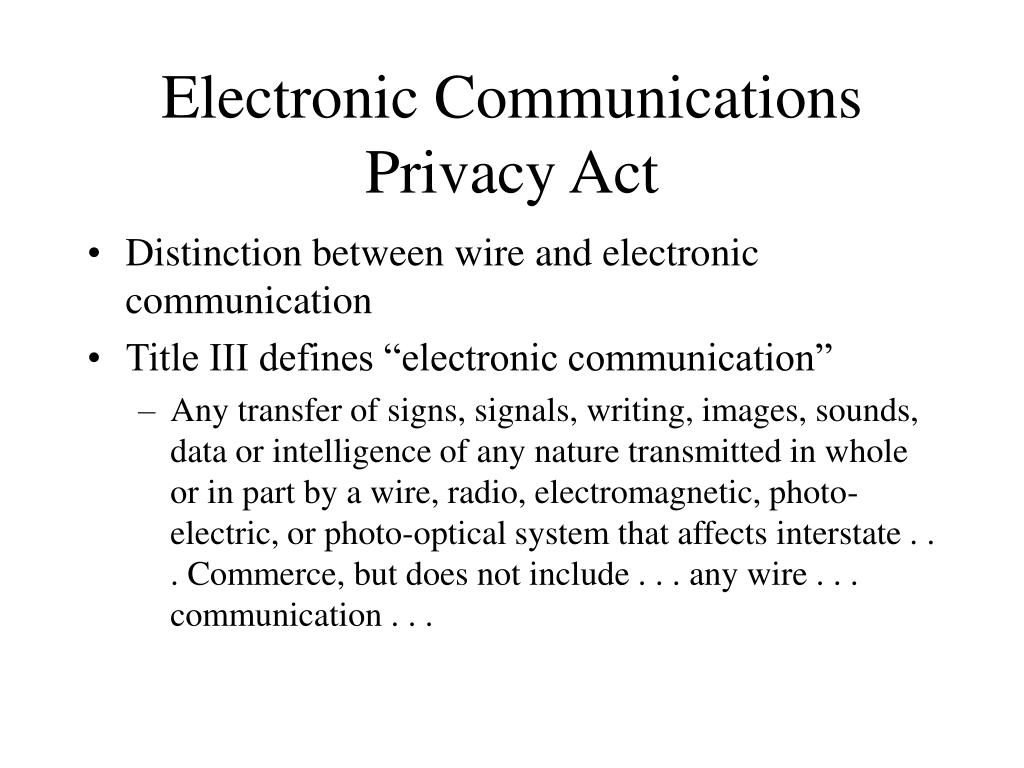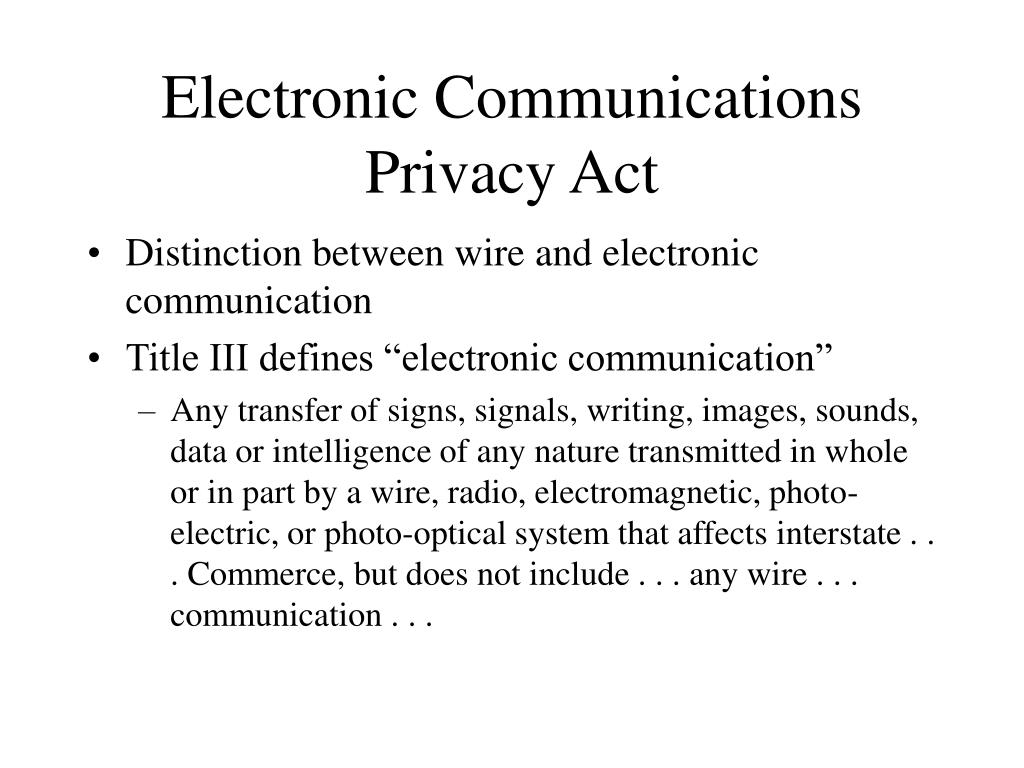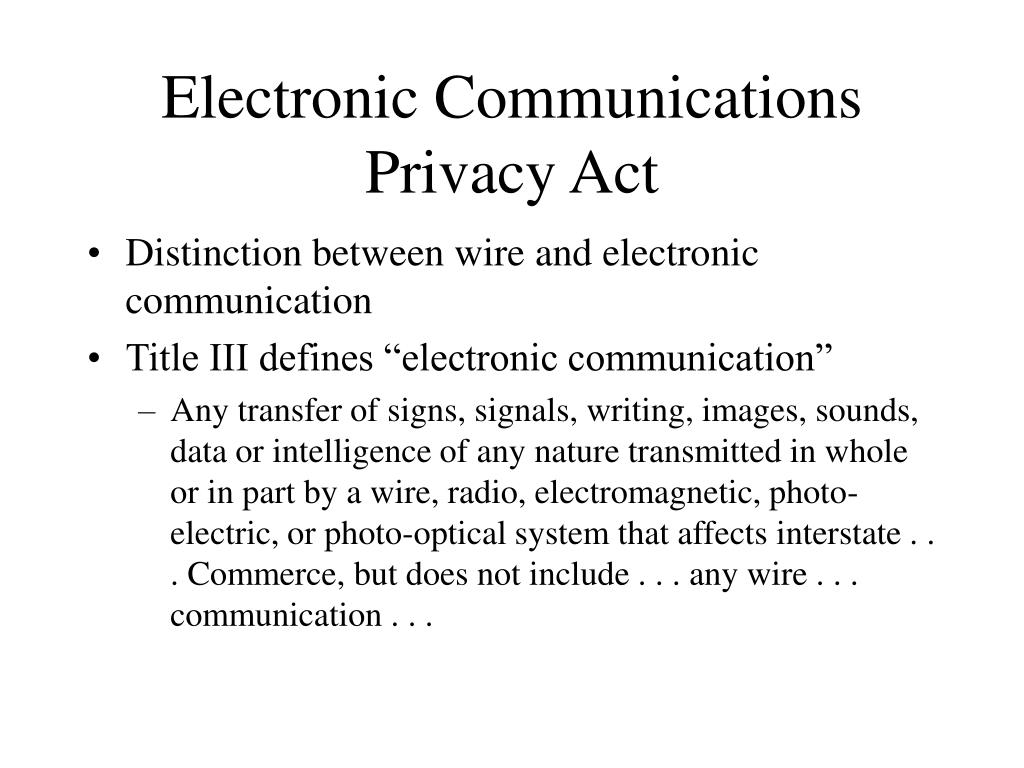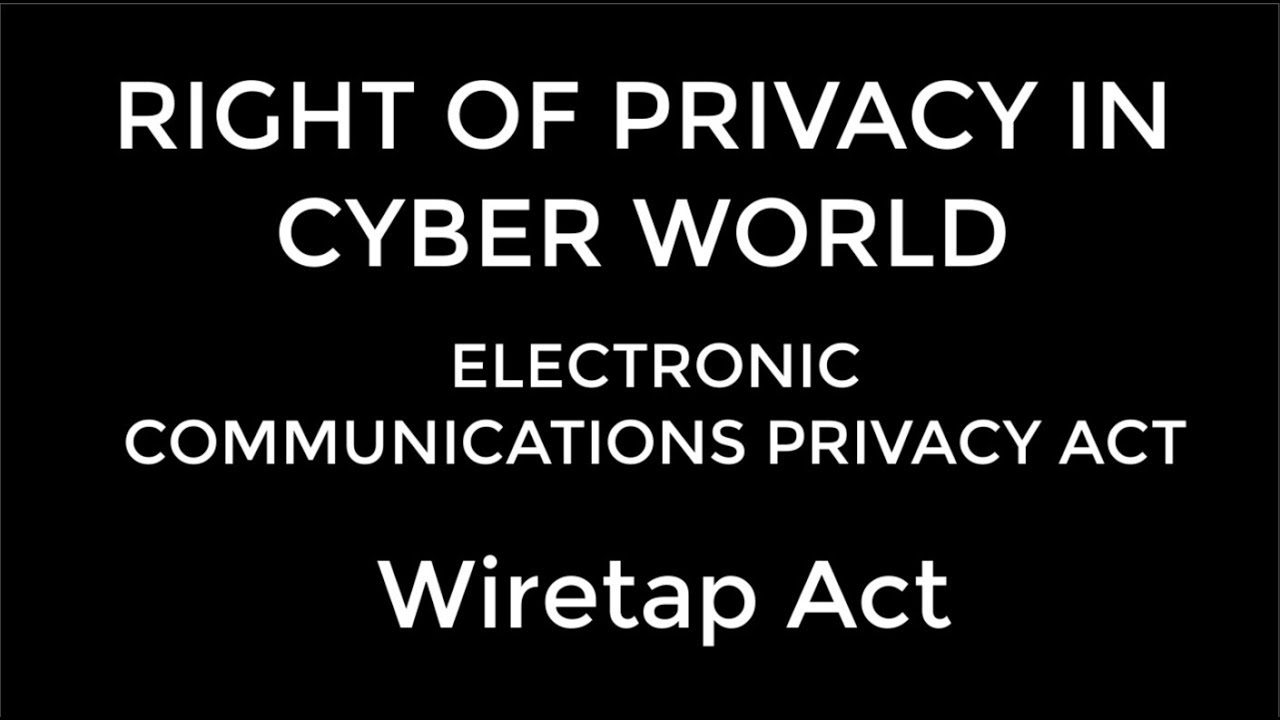Understanding the Electronic Communications Privacy Act
History and Background of the Electronic Communications Privacy Act

the Electronic Communications Privacy Act (ECPA) was enacted in 1986 to establish the rules that govern access, use, disclosure, and privacy protections of electronic communications. Before the ECPA, laws governing electronic communications were fragmented and outdated, leading to concerns about the privacy and security of digital information.
the ECPA is comprised of three main provisions: the Pen Register and Trap and Trace Devices statute, the Stored Communications Act, and the Wiretap Act. These provisions outline the circumstances under which law enforcement agencies can access electronic communications, such as emails, phone calls, and electronic records, and the privacy protections afforded to individuals.
the Pen Register and Trap and Trace Devices statute governs the use of devices that record the numbers dialed from a particular telephone line. This provision requires law enforcement agencies to obtain a court order before using such devices, except in certain emergency situations. It aims to protect the privacy of telephone communications.
the Stored Communications Act regulates how law enforcement agencies can access stored electronic communications, such as emails, voicemails, and files stored with service providers. It provides protection against unreasonable searches and seizures of electronic communications, requiring a warrant based on probable cause for access.
the Wiretap Act prohibits the interception of wire, oral, and electronic communications unless authorized by a court order. This provision safeguards the privacy of electronic communications by setting strict requirements for obtaining a wiretap warrant and ensuring that intercepted communications are used only for lawful purposes.
despite the ECPA’s important role in protecting electronic communications privacy, it has faced criticism for not keeping pace with technological advancements. the law was enacted before the widespread use of the internet and modern communication technologies, leading to debates about its relevance in the digital age.
as technology continues to evolve, the ECPA is frequently revisited and amended to address emerging privacy concerns and ensure that it remains effective in safeguarding electronic communications. Recent debates have focused on issues such as government surveillance, data encryption, and the balance between privacy rights and national security.
overall, the Electronic Communications Privacy Act represents a crucial milestone in the protection of electronic communications privacy. By establishing legal standards for access to and use of digital information, the ECPA plays a vital role in preserving individuals’ privacy rights in an increasingly connected world. It remains a cornerstone of digital privacy law and continues to shape discussions around electronic communications privacy in the digital age.
Key Provisions of the Electronic Communications Privacy Act

the Electronic Communications Privacy Act (ECPA) was passed in 1986 as an amendment to the Omnibus Crime Control and Safe Streets Act of 1968. This landmark legislation updated and enhanced the privacy protections for electronic communications, including wiretapping laws and protections against unauthorized government access to private electronic communications and data.
One of the key provisions of the ECPA is the prohibition on interception of wire, oral, and electronic communications without the consent of at least one party to the communication. This provision essentially prohibits unauthorized wiretapping or monitoring of electronic communications, such as phone calls, emails, and text messages.
The ECPA also establishes procedures and requirements for government access to electronic communications and stored electronic data. For example, it requires government agencies to obtain a search warrant based on probable cause before accessing the contents of electronic communications or data held by a service provider.
Another important provision of the ECPA is the Stored Communications Act (SCA), which governs the disclosure of stored electronic communications and data by third-party service providers. The SCA sets forth the conditions under which government agencies can compel service providers to disclose the contents of electronic communications or stored data.
In addition, the ECPA includes provisions related to pen registers and trap and trace devices, which are used to capture metadata associated with electronic communications, such as phone numbers dialed, email addresses contacted, and internet IP addresses visited. These provisions set forth the legal requirements for obtaining court orders authorizing the use of these surveillance techniques.
Overall, the Electronic Communications Privacy Act is a critical piece of legislation that protects the privacy of electronic communications and data in the digital age. It establishes clear rules and procedures for government access to electronic communications and data, ensuring that individuals have control over their private information online.
Challenges and Controversies Surrounding the Electronic Communications Privacy Act

the Electronic Communications Privacy Act (ECPA) was established in 1986 to regulate the interception of electronic communications, like telephone calls and emails. However, with the rapid advancement of technology, the ECPA has faced numerous challenges and controversies in recent years. One of the main issues is that the law has not been updated to keep pace with changing technology, leading to gaps in protection for electronic communications. As a result, there is uncertainty about how the ECPA applies to modern forms of communication, such as cloud storage and social media.
One of the most significant challenges is the lack of clarity regarding the government’s ability to access electronic communications. The ECPA allows the government to obtain stored communications that are 180 days old or older without a warrant. This provision has been heavily criticized as outdated and out of touch with modern privacy expectations. In response, there have been calls for reform to require a warrant for all stored communications, regardless of age.
Another controversial issue surrounding the ECPA is the treatment of metadata. Metadata includes information about the communication, such as the sender, recipient, and timestamp, but not the actual content of the message. While some argue that metadata should receive the same level of protection as the content of communications, others believe that it is less intrusive and should be subject to different regulations. This debate has yet to be resolved, leaving uncertainty about the privacy rights of metadata.
Additionally, the ECPA’s application to new forms of technology, such as IoT devices and smart home assistants, has raised concerns about privacy and security. As these devices collect and transmit vast amounts of personal data, there is a growing need for clear guidelines on how the ECPA applies to them. Without updated regulations, there is a risk that personal information collected by these devices could be vulnerable to misuse or unauthorized access.
Overall, the challenges and controversies surrounding the Electronic Communications Privacy Act highlight the need for comprehensive reform to protect individuals’ privacy rights in the digital age. As technology continues to evolve, it is crucial for laws and regulations to keep pace and ensure that electronic communications are secure and private.
Recent Updates and Amendments to the Electronic Communications Privacy Act

the Electronic Communications Privacy Act, also known as ECPA, is a federal law that sets standards for government access to private digital communications. It was enacted in 1986 and has become outdated due to advances in technology. Recently, there have been updates and amendments proposed to modernize the ECPA and better protect individuals’ privacy rights in the digital age.
one of the key updates to the ECPA is the requirement for law enforcement agencies to obtain a warrant before accessing the content of emails, text messages, and other electronic communications stored with third-party service providers. Previously, this content could be accessed with a mere subpoena, which raised concerns about government overreach and violations of privacy.
the amendments to the ECPA also include provisions to address issues such as geolocation tracking, data breach notification requirements, and protections for electronic communications stored in the cloud. These updates aim to ensure that individuals’ digital privacy is safeguarded and that law enforcement agencies are held to a higher standard when seeking access to electronic communications.
the updates to the ECPA have received bipartisan support in Congress, with lawmakers recognizing the need to modernize the law to reflect the realities of the digital age. Privacy advocates have also heralded these amendments as a step in the right direction towards enhancing individuals’ control over their personal data and digital communications.
as technology continues to evolve at a rapid pace, it is essential for legislation such as the ECPA to keep pace with these changes to protect individuals’ privacy rights. The recent updates and amendments to the ECPA signal progress towards achieving this goal and ensuring that our digital communications are afforded the same level of privacy protection as our physical communications.
in conclusion, the updates to the ECPA represent a positive step forward in enhancing digital privacy protections and updating legislation to reflect the realities of the digital age. It is crucial for individuals to stay informed about these changes and advocate for stronger privacy rights in the online world. By staying engaged in the conversation surrounding digital privacy, we can help ensure that our rights are protected in an increasingly digital society.

